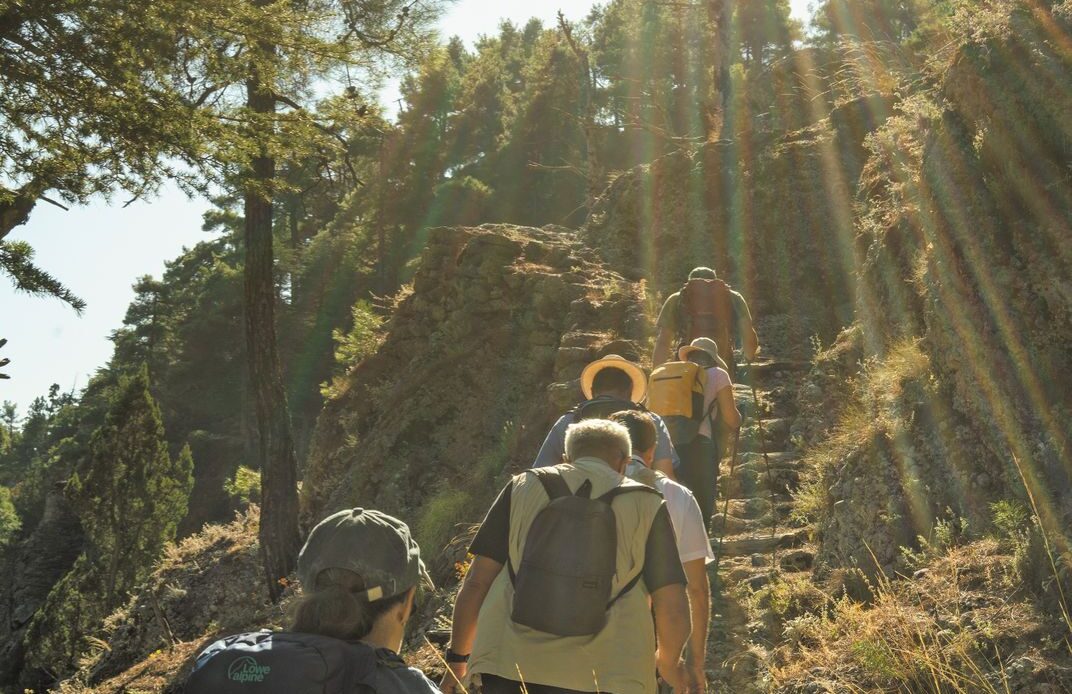We set off along the trail through the Yazili Canyon on a warm October morning, ascending through the foothills of the Taurus Mountains, north of the Turkish coastal city of Antalya. Clusters of pines and gnarled olive trees clung to the walls of the gorge, and lichen-covered boulders blocked stretches of the footpath. One hundred feet below, the icy Aksu River, known in ancient times as the Kestros, coursed toward the Mediterranean Sea. To the north rose the Taurus range, ascending to 12,000 feet, with pine-cloaked hills receding into ridges enveloped in a bluish haze.
Lutgarde Vandeput, the Belgian director of the British Institute at Ankara (BIAA), which had helped organize this trek, paused before an empty niche carved into the natural limestone wall of the canyon. Two millenniums ago, such alcoves were common along the routes of Pisidia, a remote and wild region of Anatolia, the Asian part of modern-day Turkey. In antiquity, niches typically contained a statue of a deity such as Apollo, the son of Zeus and the god of agriculture, arts and healing, where travelers could offer libations and ask for protection from wild animals and warring tribes. A crumbling inscription in Greek caught my eye. I picked out PATRIOS (literally “of one’s father,” or “countryman”) and PHOBOS (“fear”). As control over the mountains changed hands through the centuries, Christian saints replaced the Hellenistic-Roman deity.
But now the remnants of that millenniums-old history are in danger of being damaged or even lost. Vandeput, a trim woman with short-cropped reddish hair, wire-rim spectacles and an energetic demeanor, gestured to a gaping hole gouged beside the niche. “People think that these shrines mark locations where gold is stored,” she said. “They chisel into the rock to see what’s behind it. Sometimes they use dynamite.”
Hiking through Koprulu Canyon, a national park dotted with ruins and beloved for its river activities, including zip-lining and rafting beneath Roman footbridges.
Ekin Özbiçer
For three days I had been walking across the Taurus massif with a dozen other hikers…
Click Here to Read the Full Original Article at Travel | smithsonianmag.com…
